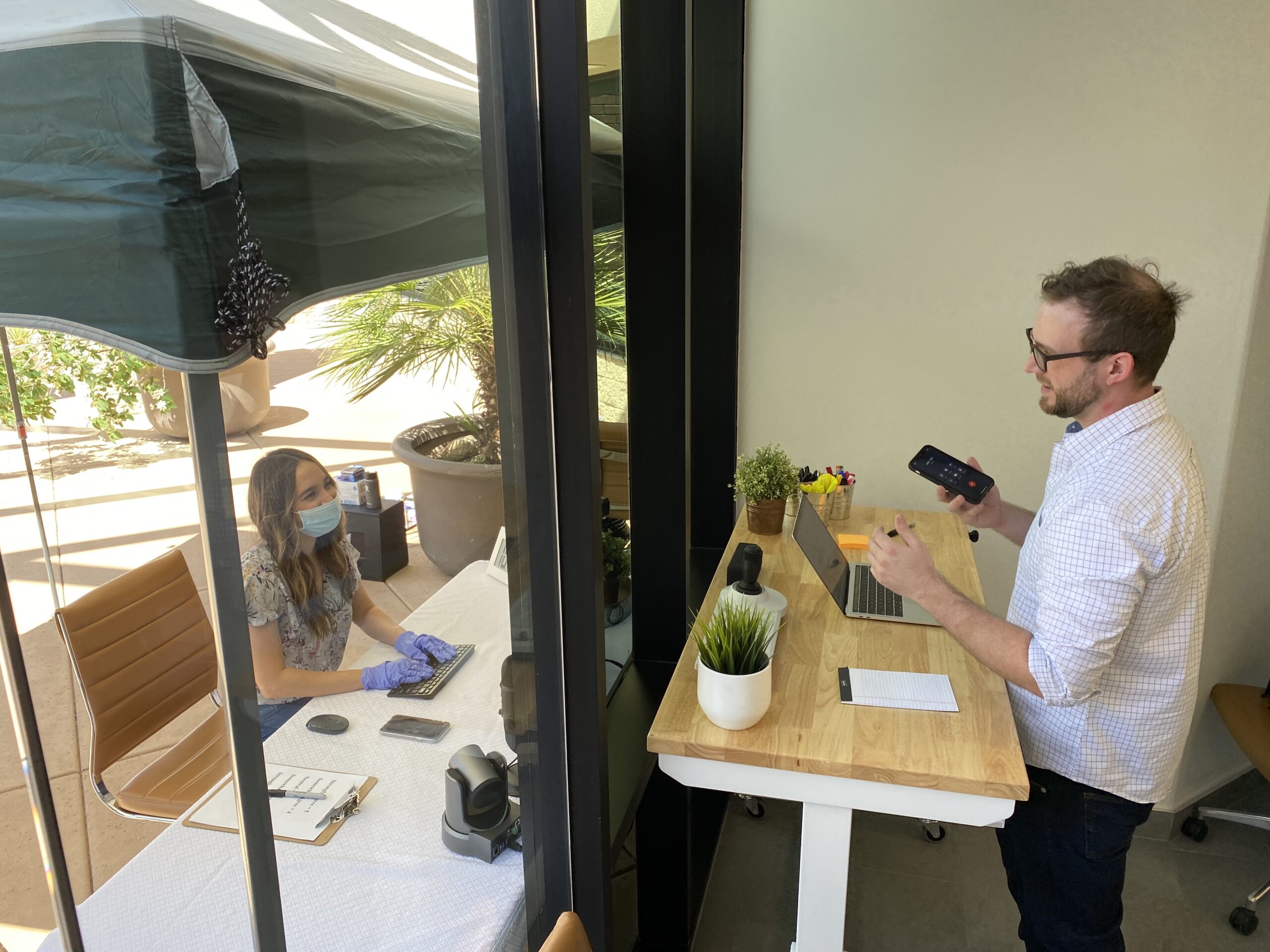Healthcare Human Factors Virtual Symposium
As an attendee of the 2020 International Symposium on Human Factors and Ergonomics in Healthcare, as it was originally planned, you would have walked into a hotel ballroom in Toronto, Canada. You would have seen a crowd of people mingling and shaking hands. Instead, the annual conference was held virtually for the first time since it began nearly a decade ago. Individuals from around the world used a virtual conferencing platform to attend from their homes, while socially distancing from their colleagues.
The 2020 HFES Healthcare Symposium was originally scheduled to take place in March. However, due to COVID-19, the event was reimagined, and all of the same five workshops, tracks, and lecture sessions were presented virtually May 18th through the 21st.
Using the virtual conference platform, presenters were able to log in, share presentation slides, and a video stream as they presented from their homes to audience members around the world. Attendees streamed the presentations and interacted with the presenters using a chat window to ask questions throughout.
In some ways, this virtual conference allowed a greater diversity of attendees and presenters. For example, in one session there was an individual in Sweden and another in California presenting from two completely different parts of the world, very cool!
A Main Theme: Reimagining Human Factors Research
All of our lives have somehow been affected by the COVID-19 environment and admittedly, it’s a difficult season. As we look forward we must also determine what this means for human factors research. Unsurprisingly, this was a hot topic of discussion at the virtual conference.
Human factors professionals have the responsibility to conduct research efforts in the safest way possible, without sacrificing data. In some cases, this means not conducting in-person research at all and using remote research tools. Where permitted and according to state-by-state guidelines, this means following specific screening criteria and cleaning procedures for in-person research.
The fact is, these are unprecedented times. We have heard this phrase so many times now in 2020, but it’s true. However, this is where we as human factors professionals thrive! This is where we have the chance to work our magic and come up with powerful solutions.
In the closing plenary session, Don Norman emphasized that human factors professionals should not just report problems. Instead, we must focus on using what we know about the problems to develop and implement strong solutions, a priori.
This is great advice for the healthcare industry working to improve COVID-19 procedures or telemedicine technology. This is also a great approach for conducting and planning research projects in the current climate.
Remote or In-Person Testing?
Right now, we need to take consideration to determine whether studies should be conducted virtually or in-person with a special focus on designing the most appropriate methodology.

During the virtual conference, Irene Z. Chen, PharmD, BCPS, a Deputy Director with the FDA shared general insights regarding CDER’s perspective on virtual human factors validation testing. She mentioned that the FDA recognizes the COVID-19 public health emergency as an obstacle for in-person human factors testing. However, the FDA is not aware of any data or guidelines that support the use of remote human factors validation testing as an acceptable or reliable method.
Therefore, the FDA is unable to provide a statement about whether or not remote testing is an acceptable approach for FDA submissions. Instead, they encourage manufacturers to reach out to their project manager with specific questions as acceptability may vary depending on the product, the type of testing required, among other factors and will address this on a case by case basis.
The COVID-19 environment is forcing innovation and change in all aspects of life. Currently, remote testing is a great option for keeping people safe and adhering to social distancing guidelines. We have many great virtual tools that allow us to present testing materials virtually, stream live video sessions, share screens, etc.
What’s more, many of these platforms let the participant click through the moderator’s screen for a more realistic testing experience. However, these platforms are not always a great option for gathering the kind of high fidelity human factors data we might need. They also might not be sufficient on their own to keep data and materials secure.
FDA’s Perspective
Xin Feng, Ph.D. from CDRH at the FDA also mentioned that in addition to COVID-19, there are many driving factors for a rise in remote testing methods for human factors research. Such as, improved mobile technology and internet speed, access to more collaborative software programs that people are open to adopting.
Additionally, remote research allows access to a wider segment of the user population because the participant’s physical distance from the researcher is not a limiting factor. However, as mentioned there are definitely limitations to using remote research tools we have today.
A number of presentations and panels discussed the considerations for conducting remote research, as well as the safety considerations that must be put in place for in-person testing. For example, an insightful panel consisting of a few fellow human factors colleagues including Anthony D. Andre, Charles Mauro, Korey Johnson, Allison Strochlic, and Michael Wiklund pointed out important ideas and things to think about moving forward with human factors research. Some key takeaways are listed below.
List of Considerations
As you can imagine there is a laundry list of things to consider when deciding to conduct research remotely or in-person. Just to name a few:
- What type of study are you conducting?
- Formative and early exploration are great candidates for remote testing
- Summative testing for FDA submissions (e.g., 510k, De Novo) likely must take place in-person
- Can the stimuli be accurately represented digitally?
- Software or Labeling can be presented digitally using remote platforms
- In-person methods better evaluate hardware and physical products
- How private or secure must the test stimuli/product be kept before, during, and after testing?
- Remote testing security varies between platforms
- In-person testing occurs in a controlled environment
- What type of participants will you need to recruit?
- Healthcare Professionals/ General population/ Immuno-compromised or High-Risk Patients
- What type of risks are involved if this group participates in-person? Does the test facility have proper cleaning and safety procedures in place for in-person testing?
- Sanitation, PPE, social distancing, limited study personnel, etc.
All of these things will vary from project to project therefore, at Research Collective we are using research methods that take all variables of the project into consideration. During these unprecedented times, we are using limitations as inspiration to provide an enhanced approach to human factors research.
What will be the “New Normal”?
Whether we are talking about research methodology, healthcare procedures, conferences, or anything in between, COVID-19 will likely change things moving forward. Just as Don Norman mentioned, human factors professionals have the knowledge and expertise to make a big difference for the better. Various speakers throughout the conference discussed ideas about moving forward, and the future looks bright.
By the way, Research Collective’s own Joseph S. O’Brian, Dr. Russell J. Branaghan, and Anders Orn presented an internal project regarding the use of eye-tracking to study the self-infusion process. A full recap of their presentation is coming soon.



